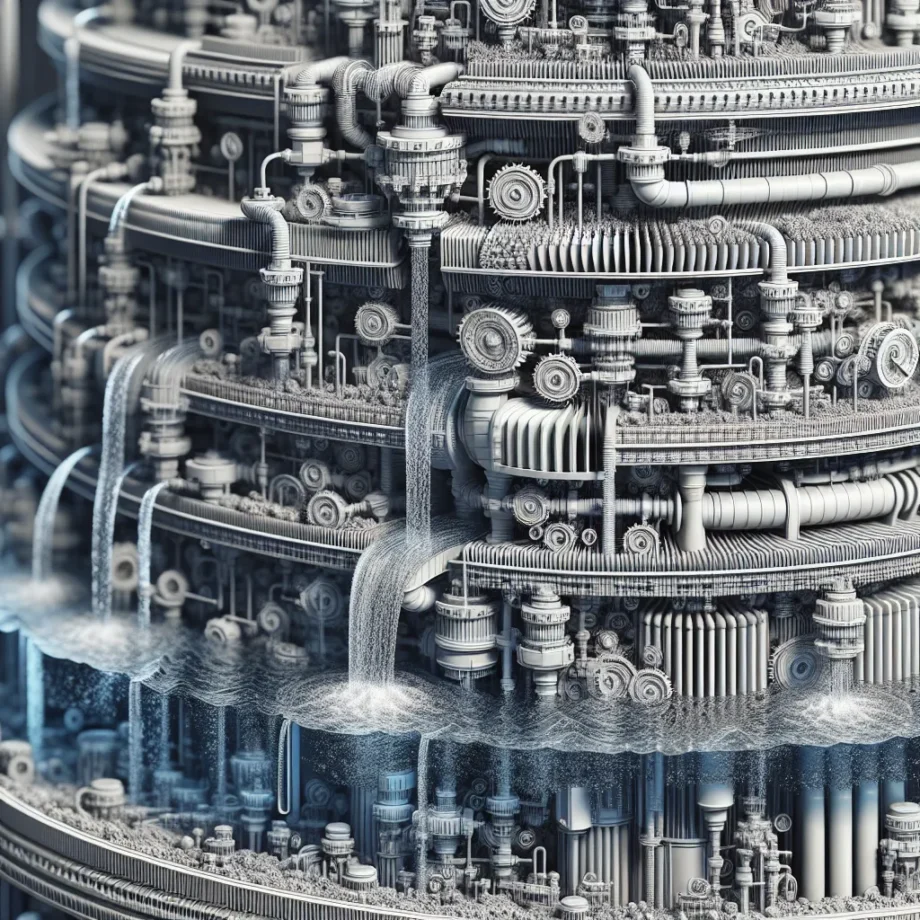Filtration: A Key Process in Water Purification
Water purification is a crucial process in ensuring access to clean and safe drinking water. Among the various methods and techniques used in water purification, filtration plays a key role in removing impurities and contaminants from the water. Filtration works by passing water through a medium, such as sand, charcoal, or a physical barrier, to trap particles and pollutants.
There are several types of filtration techniques used in water purification, including mechanical filtration, where suspended particles are physically removed; biological filtration, which involves the use of living organisms to break down contaminants; and chemical filtration, where chemical processes are used to remove impurities.
One of the primary benefits of filtration in water purification is its effectiveness in removing a wide range of impurities, including sediment, bacteria, protozoa, and other harmful substances. This makes filtration an essential step in ensuring that water is safe for consumption.
Furthermore, advancements in filtration technology have led to the development of more efficient and specialized filtration methods, such as membrane filtration and activated carbon filtration, which can target specific contaminants and improve the overall quality of the purified water.
In conclusion, filtration is a fundamental process in water purification, playing a critical role in removing impurities and ensuring the safety and quality of drinking water. As the demand for clean water continues to grow, ongoing research and innovation in filtration techniques are essential for addressing water purification challenges and providing access to safe drinking water for all.
Chemical Treatment: Removing Contaminants from Water
Chemical treatment is a crucial method in the purification of water, which aims to remove contaminants and make water safe for consumption. One of the most common techniques used in chemical treatment is chlorination. Chlorine is added to water to kill bacteria, viruses, and other harmful microorganisms. Additionally, coagulation and flocculation are utilized to remove suspended particles from water. During coagulation, chemicals such as alum or ferric sulfate are added to the water to neutralize the negative charge of particles, allowing them to clump together. Subsequently, flocculation encourages the formation of larger particles, which can then be easily removed through filtration. Another important chemical treatment method is the use of activated carbon to absorb organic compounds and improve the taste and odor of water. Furthermore, the process of disinfection with ozone or ultraviolet light helps to destroy pathogens in water without adding any chemicals. These chemical treatment methods play a vital role in ensuring that water purification is effective and safe for human consumption.
Advanced Techniques: Harnessing Technology for Safe Drinking Water
Advanced techniques in water purification are revolutionizing the way we ensure access to safe drinking water. Harnessing cutting-edge technology, these methods are instrumental in addressing the increasingly complex challenges of water contamination. One such technique is the use of advanced filtration systems, such as nanofiltration and reverse osmosis, which can efficiently remove impurities at the molecular level, including bacteria, viruses, and chemicals.
Furthermore, the application of ultraviolet (UV) disinfection technology has proven to be highly effective in eliminating a wide array of pathogens from water, providing an additional layer of protection. This advanced method utilizes UV light to disrupt the DNA of microorganisms, rendering them harmless and unable to reproduce.
In addition to these techniques, the integration of advanced monitoring and remote sensing technologies allows for real-time water quality assessment, enabling proactive responses to potential contamination events. Satellite-based remote sensing, for instance, can provide valuable insights into water sources and identify pollution hotspots, facilitating targeted intervention strategies.
As we continue to confront the global issue of access to clean water, the utilization of advanced purification techniques powered by technology holds immense promise in safeguarding the health and well-being of communities worldwide.
